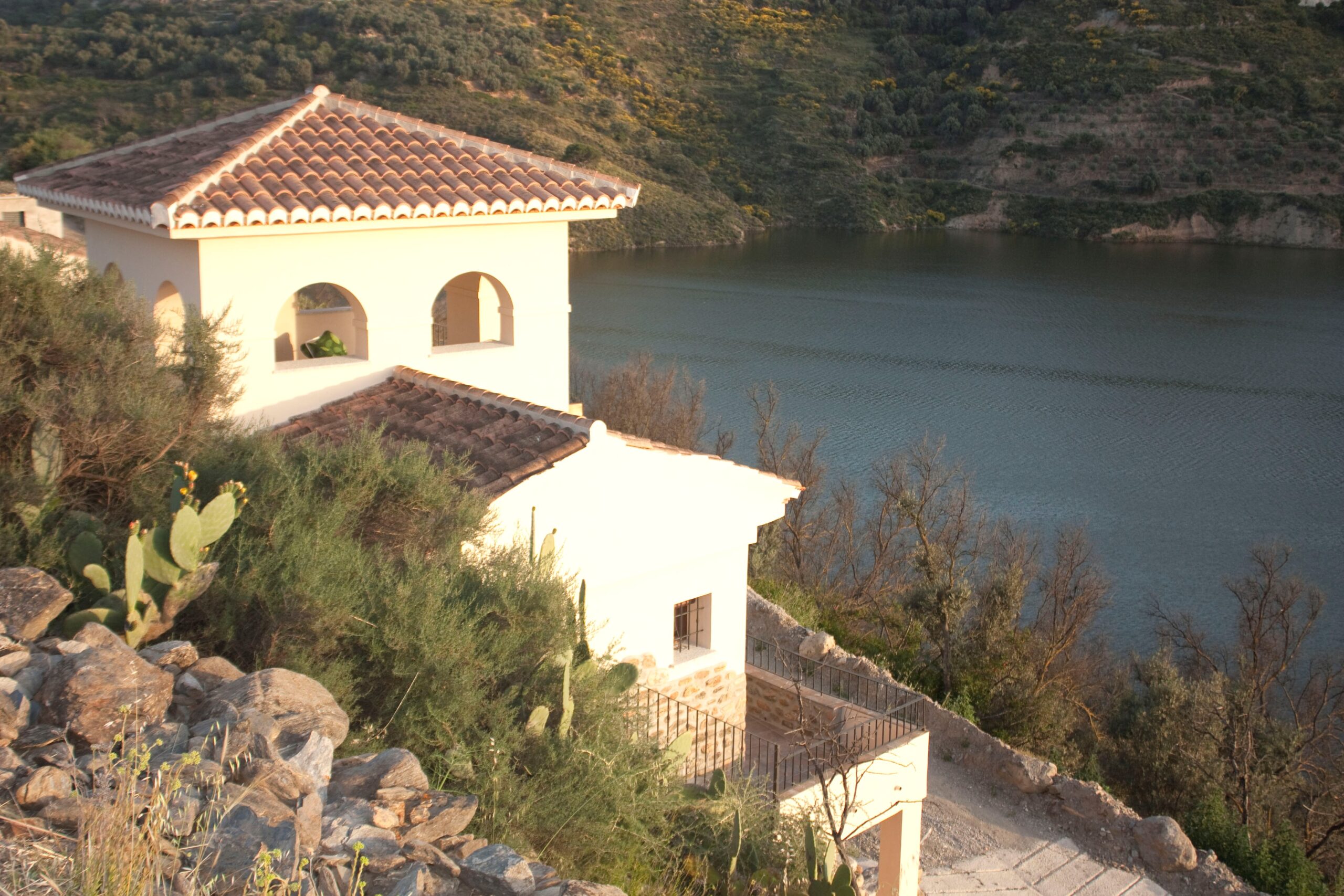Overview
In mid-2010, Paul Gawith, a property developer, found an incredibly picturesque location and decided to build the perfect Spanish holiday villa. Located by the side of Lake Beznar in the Lecrin Valley, and only a stone’s throw south of Grenada, it would offer rental customers the perfect holiday experience including sunshine and lakeside activities. Unfortunately, a major drawback of this otherwise superb location was that there was no mains electricity or gas, and to secure a mains overhead power connection was going to cost in excess of €100,000. As a result, an alternative and less expensive solution had to be found to ensure that the project could continue.
Paul explains, “I was sure that I needed to find the most integrated off-grid solution that could ideally be supplied and installed by a single creditable company. It took a while, but I finally found the Powerguard PS Combined Heat & Power System on the internet. It intrigued me greatly as I was not familiar with the concept of using the heat from an electrical generator to heat hot water, but when I realised that the system had efficiency in excess of 80% and would provide electricity and free hot water for my space heating and mains water supply, I quickly warmed to the idea!”
The reason why the CHP system is so efficient is that it captures the waste heat from the generator exhaust gasses, which would otherwise be lost, to heat a hot water store. It is from this hot water store that both space heating and mains hot water can be obtained. As a fully integrated CHP system, the intelligent electronic control system also allows the system to optimise the use of the generator to minimise fuel costs. The backbone of the integrated power system is the PS controller, battery pack, and inverter. Using these elements, fuel costs can be slashed by a third over stand-alone generators which run 24/7.
Unlike normal generators which would run all of 24hrs, the Powerguard CHP system only needs to turn on the generator during periods when the electrical demand is high e.g. for a power shower, cooker or washing machine. This high demand period usually equates to less than 8hrs per day and if these periods are regular, the PS controller can be programmed to turn on the generator automatically. For all other times when the demand is low, the system powers the home using its revolutionary battery pack & inverter 230V AC mains supply concept.
Paul explains, “The system will typically operate the generator for less than six hours a day with two set periods; one period between 7am and 10am and the second between 5pm and 8pm. The morning run will simply recharge the batteries from any overnight use and if everyone gets up at this time, any appliances can be turned on without any use of the batteries – customers will be told to time it so this happens. In the evening, the generator will be programmed so customers can have dinner using the cooker and perhaps have showers – again without using the batteries.”
The clever part of the PS CHP System is that during periods when the demand is high, any unused power is used to recharge the batteries and then to directly heat the water in the hot water store. In the case of the battery pack, the stored energy then provides AC mains power to the Villa for the remainder of the day and night i.e. when the demand is low. During the day, if more power is required than what can be provided by the batteries, the PS Controller automatically turns on the generator and subsequently switches it off after the load has reduced. As part of the PS CHP system, which is to be housed in its own small building adjacent to the main villa, renewable inputs from solar panels and a small wind turbine will be integrated meaning even more fuel savings and less CO2 emissions.
Paul comments, “With so much sunshine in the south of Spain, the use of solar panels provide a very economical way of recharging the batteries and directly heating the hot water store. It is so reassuring to know that the PS CHP System has been designed to allow these inputs to be connected. I intend to firstly install solar panels, followed by a small wind turbine. I have to confess, the PS CHP System is truly an amazingly smart and economical piece of kit.”
Our Products
- Water Pumps
- Industrial (Three Phase)
- Industrial (Single Phase)
- Residential
- Portable
- Off-Grid Power Systems
- Central Battery Systems for Emergency Lighting
- Mini grid & EV charging
- Marine Systems
- Renewable Energy
- Generator & Control Systems
- Uninterruptible Power Supply (UPS) Systems
- Inverters & Inverter Systems
- Battery Chargers Systems
- Diesel & Gas Generators
